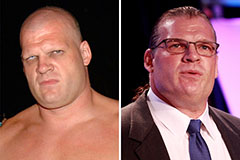Extended Coverage, Same Exceptional Quality
Famous for its commitment to excellence, MyCigarsASAP.com delivers a premium lineup of curated cigars from renowned brands in the industry. By broadening its reach to West Hollywood, the company maintains its provision of immediate availability of a wide range of luxury cigars, keeping the same stringent quality control that has gained it trust among cigar enthusiasts.
Cigar Delivery West Hollywood
CALL (800) 654-7959
Cigar lovers in West Hollywood can choose from popular brands such as: • Arturo Fuente – Providing a varied collection of skillfully handmade cigars. • Montecristo – Recognized for its refined, balanced blends that cater to diverse palates. • Cohiba – Known worldwide for providing a full-bodied, hearty smoking experience. • Davidoff – A sign of class, presenting cigars of exceptional stability and grade. • My Father's Cigars – Delivering bold, profound tastes that reflect Cuban cigar culture. • Ashton – Celebrated for its creamy, polished taste, produced from the best Dominican tobaccos. • Padron – Known for its hearty tastes and expert artistry, including the much-coveted 1964 Anniversary Series. • Romeo y Julieta – A traditional favorite renowned for its balanced flavors and dependable quality.
This wide assortment ensures that MyCigarsASAP.com caters to a broad spectrum of preferences, with cigars procured from famous regions like Nicaragua, the Dominican Republic, and Honduras.
Focus on Freshness and Excellence
Superiority is at the basis of MyCigarsASAP.com’s business. To ensure that each cigar arrives in perfect condition, the company utilizes meticulous quality control practices, including temperature-controlled storage and meticulously chosen inventory. Every consignment is handled meticulously, guaranteeing that the cigars are sent fresh and flavorful. Moreover, their crew of cigar aficionados is at hand to deliver bespoke suggestions, offering each customer a personalized and informative experience.
Speedy and Convenient Delivery to West Hollywood
Through this latest increase in service, MyCigarsASAP.com establishes its role as a premier fast premium cigar delivery service locally. Whether for a surprise party, a arranged function, or a quiet night of unwinding, inhabitants in West Hollywood can now take pleasure in rapid cigar deliveries within 30 to 60 minutes of order placement. This rapid service delivers a increased comfort to West Hollywood’s cigar lovers.
Cigar Delivery West Hollywood
CALL (800) 654-7959
About MyCigarsASAP.com
MyCigarsASAP.com is a LA-headquartered cigar delivery service committed to providing speedy, secure access to a high-quality selection of cigars. With a attention to quality, freshness, and personalized service, the company has established itself as a reputable source for cigar connoisseurs region-wide. Now, with augmented service to West Hollywood, MyCigarsASAP.com persists in pioneering the delivery of top-quality cigars promptly and accurately.
For more data or to order now for quick delivery, call (800) 654-7959.
Cigar Beginnings and Heritage: A Passage Through Centuries
Cigars, often associated with splendor, legacy, and artistry, embody a profound history tracing back eras. The evolution of cigars demonstrates the convergence of peoples, voyaging, and business exchange. This write-up examines the engaging roots and heritage of cigars, following their passage from native traditions in the Americas to becoming a international mark of elegance.
The Old Beginnings: Cigars in Pre-Columbian Cultures Cigars have their first genesis in the indigenous civilizations of the Americas. Age-old civilizations, including the Mayans, Aztecs, and Taínos, are acknowledged to have consumed folded tobacco leaves. Excavation artifacts present scenes of Mayans inhaling on ceramic vessels going back to around the 10th century. The title “cigar” likely derives from the Mayan word “sikar,” which signifies to smoke.
In these primitive societies, tobacco was not only a pleasure product but also held mystical significance. Healers and tribal leaders consumed tobacco during spiritual customs, considering it allowed them to engage with the invisible world. Tobacco was also used remedially, offering easing for various conditions, such as pains and gastrointestinal issues.
Tobacco’s Entrance to Europe: Columbus and the New World The European past of cigars began with Christopher Columbus’s appearance in the Americas in 1492. His crew stumbled upon tribal people enjoying bundles of dried tobacco fronds, an new practice that interested them. Columbus and his men brought samples back to Spain, marking the commencement of Europe’s affiliation with tobacco.
The practice of consuming quickly expanded across Europe. Spaniards embraced it first, and by the 16th century, tobacco use turned into popular among European upper class. Early cigars were primitive compared to modern versions, but their appeal moved to Italy, Portugal, and France. Tobacco was also viewed as a miracle remedy, held to remedy a array of conditions from common colds to fatigue.
Cuban Influence: Birthplace of the Modern Cigar Cuba’s contribution in cigar heritage is essential, turning tobacco from a regional commodity into a universal phenomenon. In the 17th century, Cuba developed into the core of cigar generation due to its ideal climate and fertile soil, particularly in the Vuelta Abajo region. Cuban cigars quickly gained a renown for unequaled quality and skill.
By the 1800s, the Cuban cigar industry was prospering, and the term “Havana cigar” turned into synonymous with excellence. Master artisans, known as torcedores, created cigars by hand, honing techniques that persist largely unchanged today. Many of the world’s most renowned cigar brands, such as Montecristo, Cohiba, and Romeo y Julieta, owe their roots to this era.
The Expansion to North America and Europe The craving for cigar s escalated beyond Cuba’s borders by the 18th and 19th centuries. Tobacco plantations launched arising in other Caribbean islands, such as the Dominican Republic and Jamaica, as well as parts of Central America, including Honduras and Nicaragua. These regions are still cigar strongholds today, each adding singular characteristics to their products.
In Europe, Spain and the Netherlands developed into significant consumers and producers of cigars. The Dutch founded a robust cigar industry, importing Cuban tobacco and fusing it with regional leaves to produce singular styles. Meanwhile, cigar enjoyment in the United States was linked with status and masculinity. The rise of industrialization saw cigar factories grow across the U.S., particularly in Florida, where Cuban immigrants transferred their artisanry and traditions.
Cigars and Social Status: From Aristocracy to the Everyday Man Throughout history, cigars have been closely linked to status, wealth, and celebration. By the 19th century, cigars were a mainstay among European and American aristocrats. Monarchs such as King Edward VII of England were well-known cigar connoisseurs, further elevating their popularity among the elite.
In the United States, cigars became associated to political power and business success. Industrial magnates like Andrew Carnegie and John D. Rockefeller were often captured consuming cigars, confirming their image as symbols of wealth. Prominent figures such as Winston Churchill famously adopted cigars, contributing to their prestige.
However, cigars were not restricted to the upper class. The growth of the cigar industry led to the creation of economical options, making cigars obtainable to the working class. Cigar clubs and lounges arose, offering venues where people from all walks of life could enjoy a smoke.
The Cuban Embargo and the Rise of New Markets The Cuban cigar industry faced a major change in 1962 when the U.S. government, under President John F. Kennedy, imposed a trade embargo on Cuba. Cuban cigars, previously a staple among American cigar enthusiasts, became illegal in the U.S., creating both paucity and intrigue around them. As a result, many Cuban cigar makers migrated to neighboring countries like the Dominican Republic, Nicaragua, and Honduras, where they continued their trade using Cuban-seed tobacco.
This geopolitical shift introduced new markets and helped to the rise of premium cigars outside Cuba. Today, cigars from these regions are celebrated for their quality, equaling Cuban cigars in flavor, construction, and diversity.
Cigars in Popular Culture and Cinema Cigars have confirmed their place in popular culture, often embodying power, victory, and sophistication. Hollywood adopted the cigar as an icon, featuring it prominently in films. Characters like Tony Montana in Scarface and Winston Churchill in The Darkest Hour perpetuate the affiliation between cigars and authority.
Moreover, cigars are a fixture at celebrations, marking occasions such as weddings, business deals, and the birth of children. Cigar lounges and clubs continue to serve as gathering spots for socializing and networking, supporting their cultural relevance.
The Modern Cigar Renaissance The late 20th and early 21st centuries have experienced a revival of cigar culture. The 1990s “Cigar Boom” in the U.S. saw a resurgent interest in premium cigars, with new connoisseurs joining the scene. Artisanry, diversity in blends, and specialized techniques have driven the modern cigar renaissance.
Craft cigar brands have gained popularity, offering particular blends that appeal to a rising demographic of younger smokers. Additionally, the rise of cigar lounges and online cigar shops has made it simpler for consumers to experience different varieties from around the world. Events like Cigar Aficionado’s Big Smoke further demonstrate the continuing draw of cigars in contemporary culture.
Cigars and Sustainability: The Future of the Industry As the cigar industry advances, sustainability has become a key issue. Environmental factors, including climate change and deforestation, impact tobacco cultivation. Many cigar manufacturers are implementing eco-friendly practices by using sustainable farming methods and fostering reforestation efforts.
Fair labor practices are also becoming widespread, with companies providing fair wages and safe working conditions for the farmers and artisans involved in cigar production. The priority on sustainability aims to protect the industry’s legacy while accommodating the expectations of socially conscious consumers.
Conclusion: A Legacy of Tradition and Craftsmanship From the venerated ceremonies of indigenous tribes to the lavish lounges of today, cigars have moved a long and notable path. Each inhalation of a premium cigar carries with it the legacy of generations of artistry, tradition, and cultural significance. Whether relished by royalty, industrial tycoons, or modern-day lovers, cigars continue to stand for more than just tobacco—they comprise a lifestyle, a celebration, and a association to history.
As the world of cigars advances, one thing remains constant: the allure of sitting back, lighting up, and enjoying the skillful combination of tradition and innovation enveloped in each leaf.
The Cigar Assembly System: A Trip from History to Present
One Cigar Manufacturing Process: The Journey from Past to Present
Introduction
This cigar, an timeless symbol of elegance and refinement, has a rich history that encompasses centuries and continents. From its early origins among first peoples to its modern incarnation as its own global industry, the process of crafting a cigar is an blend of craft, research, and tradition. This article dives into the intricate journey of cigar manufacturing, evaluating the methods of the past with those of today, and underscoring how innovation and heritage cooperate in this absorbing craft.
I. Historical Overview of Cigar Manufacturing
A. Early Origins of Cigars
The history of cigars originates to the indigenous peoples of the Caribbean and Mesoamerica, who farmed tobacco and used it in religious click here now and medicinal practices. When Christopher Columbus arrived in the New World in 1492, he and his crew observed the native Taíno people of Cuba and Hispaniola wrapping and smoking dried tobacco leaves. This practice fascinated the Europeans, who brought tobacco back to the Old World, where it quickly attained popularity.
B. Traditional Cigar-Making Techniques
1. Tobacco Cultivation
In the early days, tobacco cultivation was an manual and labor-intensive process. Farmers trusted natural cycles and traditional knowledge to grow tobacco plants. The seeds were cultivated by hand, and the plants required meticulous care to thrive.
2. Leaf Selection and Fermentation
After harvesting, the tobacco leaves were subjected to a natural air-curing process. They were suspended in curing barns to dry slowly, giving the chlorophyll to break down and the leaves to acquire their characteristic brown color. Fermentation proceeded, where the leaves were piled in piles called pilones. The natural heat generated by microbial activity reduced harshness and accentuated the rich flavors.
3. Rolling Methods
Cigar rolling was the craft transmitted through generations. Skilled artisans, known as torcedores, constructed cigars entirely by hand. They chose filler leaves, tied them with a binder leaf, and wrapped the bunch with a high-quality wrapper leaf. This meticulous process necessitated precision and an eye for quality.
C. The Role of Cuban Cigar Tradition
Cuba became linked with premium cigars due to its ideal climate and soil conditions, particularly in the Vuelta Abajo region. The country's cigar-making techniques established the standard for quality and craftsmanship. Cuban cigars were eagerly pursued, and the methods developed there influenced cigar production worldwide.
II. Modern Cigar Manufacturing Process
A. Advances in Tobacco Cultivation
1. Genetic Selection
Modern agriculture has incorporated genetic selection to increase tobacco plant qualities. Scientists and farmers collaborate to develop tobacco strains resistant to diseases and pests, and with desired flavor profiles. This produces more consistent and high-quality crops.
2. Modern Farming Techniques
Today, tobacco farming utilizes advanced irrigation systems, soil management, and crop rotation to maximize yield and quality. Precision agriculture technologies, such as GPS mapping and drones, enable monitor plant health and optimize resource use.
B. Leaf Processing Today
1. Fermentation Methods
While the fundamental principles of fermentation stay, modern facilities manage temperature and humidity with greater precision. This control maintains uniformity and enriches flavor development. Some producers implement multiple fermentation cycles to refine the tobacco further.
2. Aging and Storage
Post-fermentation aging has become a critical step. Tobacco leaves are aged in controlled environments, sometimes for several years, to mellow the tobacco and increase complexity. Aging rooms are equipped with technology to sustain ideal conditions.
C. Contemporary Cigar Rolling
1. Machine-Made vs. Hand-Rolled Cigars
The 20th century saw the arrival of mechanization to cigar production. Machine-made cigars adopt homogenized tobacco leaf (HTL) binders and wrappers, granting mass production at lower costs. However, premium cigars last to be hand-rolled, protecting the artisanal tradition.
2. Quality Control
Modern factories implement strict quality control measures. This includes regular inspections, draw testing to ensure proper airflow, and sensory evaluations. Technology assists but does not replace the expertise of seasoned inspectors.
D. Innovations in Packaging and Distribution
Advancements in packaging materials protect cigars from environmental factors during shipping. Vacuum-sealed packaging, humidification devices, and sophisticated distribution logistics ensure cigars reach consumers in optimal condition.
III. Comparing Past and Present Methods
A. Technological Advances
Technology has streamlined many aspects of cigar manufacturing without diminishing the importance of skilled labor. Mechanization executes repetitive tasks, while artisans attend on quality and craftsmanship.
B. Maintaining Tradition in a Modern Industry
Despite technological progress, the essence of cigar-making endures rooted in tradition. Many producers focus on hand-rolled methods and traditional fermentation to sustain authenticity and meet the needs of aficionados who appreciate heritage.
C. Challenges and Opportunities
The industry faces challenges like regulatory changes, health concerns, and market fluctuations. However, opportunities come up from expanding global markets, premiumization trends, and consumer interest in artisanal products.
IV. The Art of Cigar Making: Preserving Craftsmanship
A. The Role of the Torcedor (Cigar Roller)
Torcedores are revered figures in cigar factories. Their expertise governs the cigar's construction and performance. Training to become a master roller can take years, illustrating the complexity of the craft.
B. Apprenticeship and Skills Transfer
Many factories manage apprenticeship programs to transfer skills to new generations. This affirms the survival of traditional techniques and keeps high standards in production.
C. Cultural Significance
Cigar-making is more than a business; it's the cultural heritage in regions like Cuba, the Dominican Republic, and Nicaragua. Festivals, museums, and tours commemorate this legacy, attracting enthusiasts worldwide.
The cigar manufacturing process is an captivating blend of time-honored traditions and modern innovations. While technology has brought in efficiencies and consistency, the heart of cigar-making rests in the hands of skilled artisans who preserve a legacy that extends over centuries. Acknowledging this journey amplifies the appreciation of cigars, not just as products but as representations of cultural heritage and craftsmanship.
 Emilio Estevez Then & Now!
Emilio Estevez Then & Now! Ralph Macchio Then & Now!
Ralph Macchio Then & Now! Amanda Bearse Then & Now!
Amanda Bearse Then & Now! Kane Then & Now!
Kane Then & Now! Bill Murray Then & Now!
Bill Murray Then & Now!